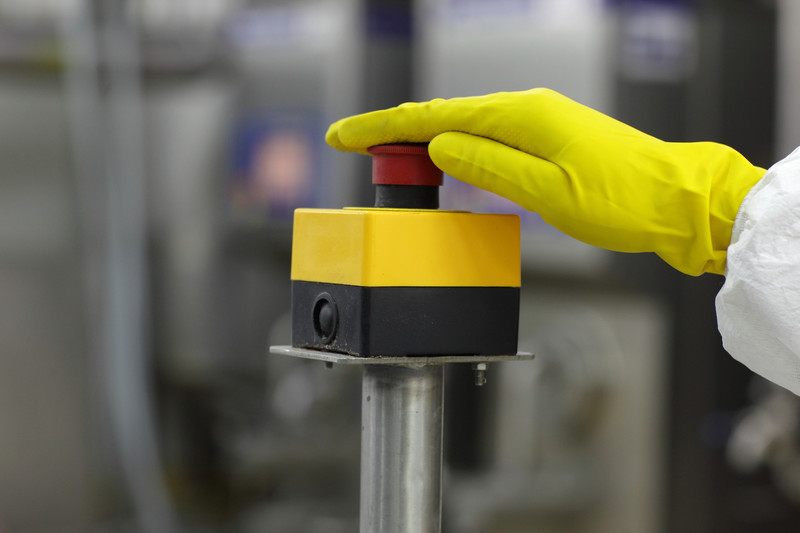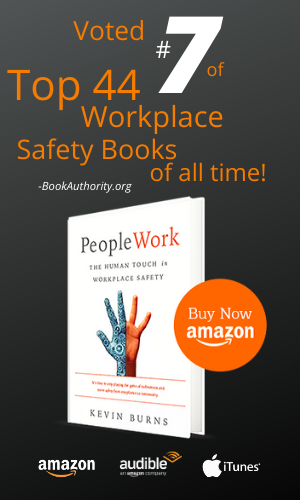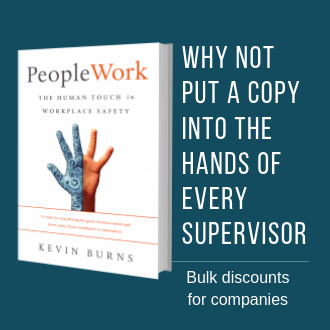What's Your Safety Complacency Plan?
Your team was doing great in safety and then suddenly, it wasn’t. You’ve been watching the incident numbers inch up over a few months and you are concerned that something bigger is going to happen. You know you need to deal with it before it gets worse. But you don’t know where to start.

And you’re not even sure what the plan is or whether you even have the time needed to fix it. Complacency is the biggest concern of safety professionals and senior managers.
Here’s what doesn’t work.
When faced with safety complacency, the conventional approach is to double-down on safety rules and process enforcement. To step up the reminders and couple it with consequences. To drill more on procedure.
But you don't fix recurring safety issues by piling on more safety. That's because complacency isn't a safety issue. It's a communications and engagement issue.
Gallup polling for the past 20 years has measured workplace disengagement rates. In 2000, the disengagement rate was 74%. 3 out of every 4 workers was not actively engaged in their work.
Last year, Gallup’s measurement pegged the disengagement rate at 65%. In 20 years, we have only improved the level of workplace engagement by nine percentage points. Nine.
Are your expectations realistic?
So, here’s the question senior managers, mid-managers and safety professionals need to ask themselves before they start clamping down on their employees. If employees are not actively engaged in their work, how do you expect them to be actively engaged in safely the doing the very work they’re not actively engaged in?
Until you address the chronic disengagement problem, you are never going to solve complacency. And while it seems that hammering on safety rules and procedures improves your safety performance numbers, it creates a whole new series of issues that you end up forced to deal with.
Getting up in the morning to come to work at a place that repeatedly hammers away on process and procedure and consequences makes for a lousy place to work. You are going to turn over staff. And when you introduce numbers of new employees over a short period of time, you increase your risk of incidents.
You need a better plan.
Getting employees to buy-in to the safety program is not the first step in addressing complacency. It is actually the third step. There are two far more important factors you need to address before you jump to employee buy-in.
Here is the 3-Step Plan to overcome complacency.
Step 1: Identify and clarify your core safety message.
What is the key message that you want every employee, supervisor and manager to own? What do you want your people to do more of, to do differently, or to do better?
The message needs to be concise and clear - 7 words or less. The shorter that message, the easier it is to retain and recall.
Your core message becomes the foundation for all of your communications. It becomes that anchor that you can connect your communications, safety meetings, huddles, teambuilding, hiring, and retention strategies. Most of all, it becomes the foundation for how you develop supervisors.
Step 2: Develop supervisors with the skills to support safety.
There is no influence on employee behaviors more than the example of the employee’s front-line supervisor. Think about it. You figure out what is most important to your boss and then you do exactly that. If your boss has strong values around safety, you will soon get with the safety program.
Employees do what supervisors do. Equip your supervisors to be able to positively influence their teams. Give them the leadership skills and coaching to be able to effectively lead their teams and rally the team around a common safety mission.
However, sticking supervisors into a one-day course is not going to transform their skills. That may be the worst way to train. The best way is over months with small bits of new information and skills coupled with ongoing coaching, mentoring and practice.
When you make an investment in your supervisors you get a better return from your employees.
Step 3: Get employee buy-in and participation in safety.
Once the core safety message has been clarified and supervisors are supporting the safety program, you are positioned to easily get employee buy-in to safety. In fact, this might be the step that requires the least amount of effort. Your supervisors will do the lion’s share of the work in achieving safety buy-in from employees.
Supervisor communication coupled with a strong, clear, concise core message in safety, removes the need for most intervention by middle and senior managers in the day-to-day activities of the employee.
Employees need good examples to learn from, good communications, and good coaching from their supervisors. Do those things right and you will find that employees get on-board with participating in the safety program.
Better outcomes when complacency is dealt with.
When your safety messaging improves, when supervisors support safety, you get employee buy-in more easily. That gives you a great deal of certainty in knowing that your people are on top of it. When certainty improves, you feel less frustrated, less anxious and more in control. And isn't that supposed to be how we go to work each day?
These are same the three steps that we use when we work with companies to help them overcome complacency and improve safety participation and buy-in.
If you want to get a handle on your current complacency issues, or if you just want to keep your people sharp, set up an introductory meeting with Kevin Burns.






